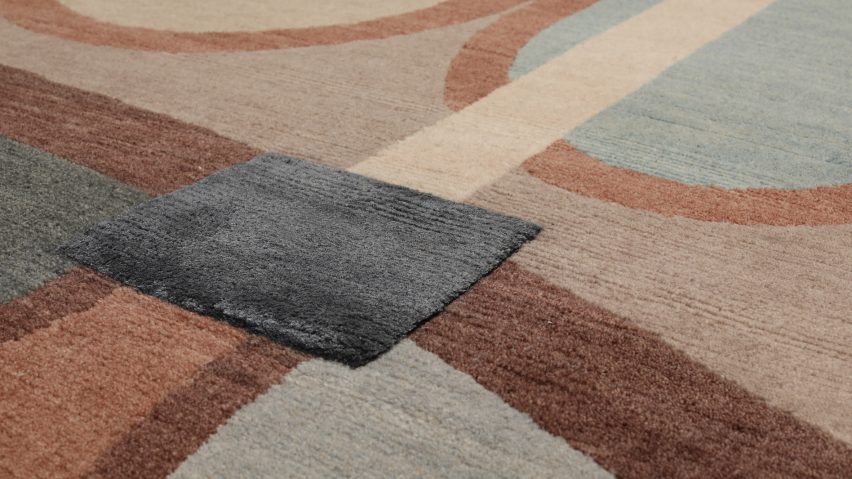
Studio Klass' Cinquecento rug collection takes cues from Renaissance art
Industrial designers Marco Maturo and Alessio Roscini from Studio Klass have created a collection of geometric rugs informed by Italian Renaissance paintings.
Called Cinquecento, meaning 500 in Italian, the collection was designed by the Milan-based duo for contemporary rug manufacturer CC-Tapis.
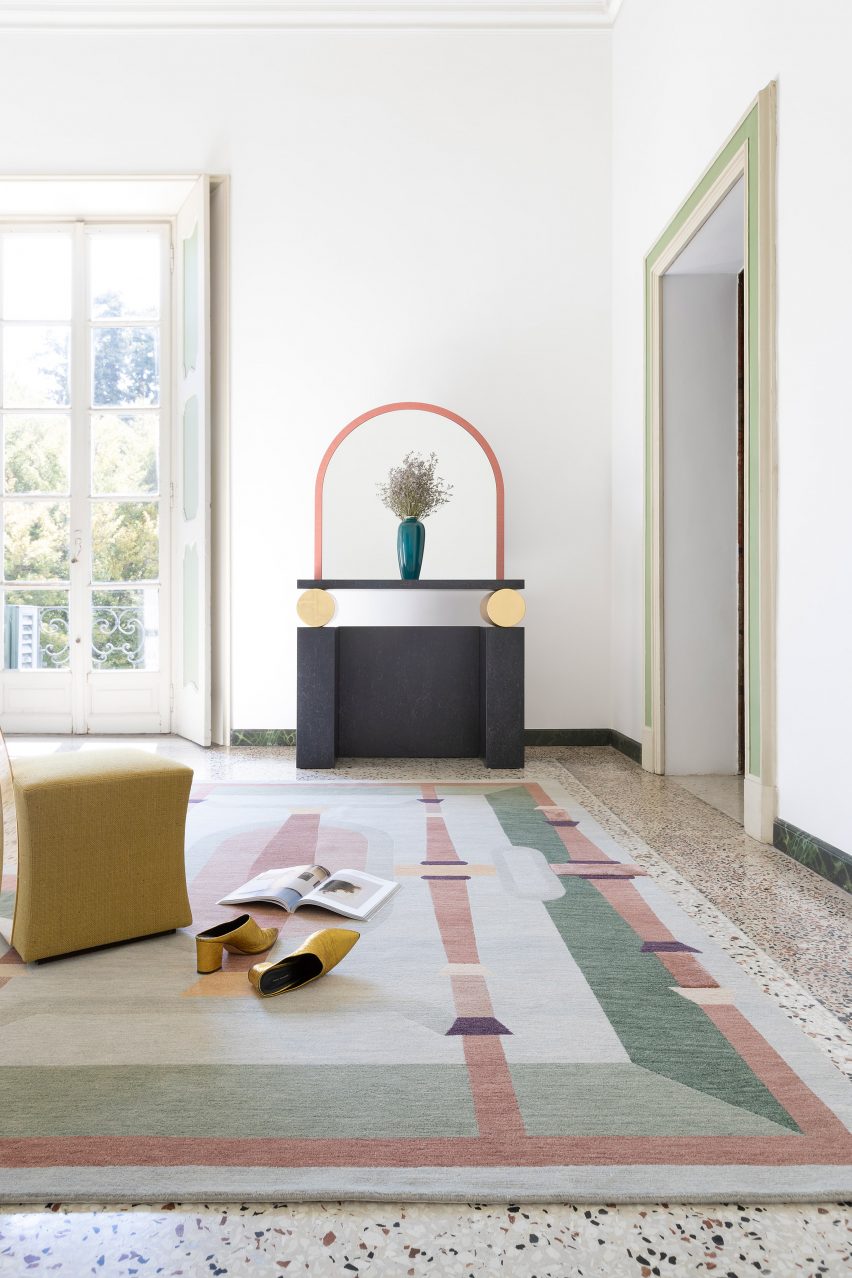
Handmade using Himalayan wool and silk, the rugs aim to celebrate the introduction of perspective in art during the Italian Renaissance period through their geometric patterns and jewel-toned colours.
Each of the four rugs in the collection has been inspired by a particular painting from the Renaissance era, including well-known 15th century artists such as Sandro Botticelli and Giovanni Bellini.
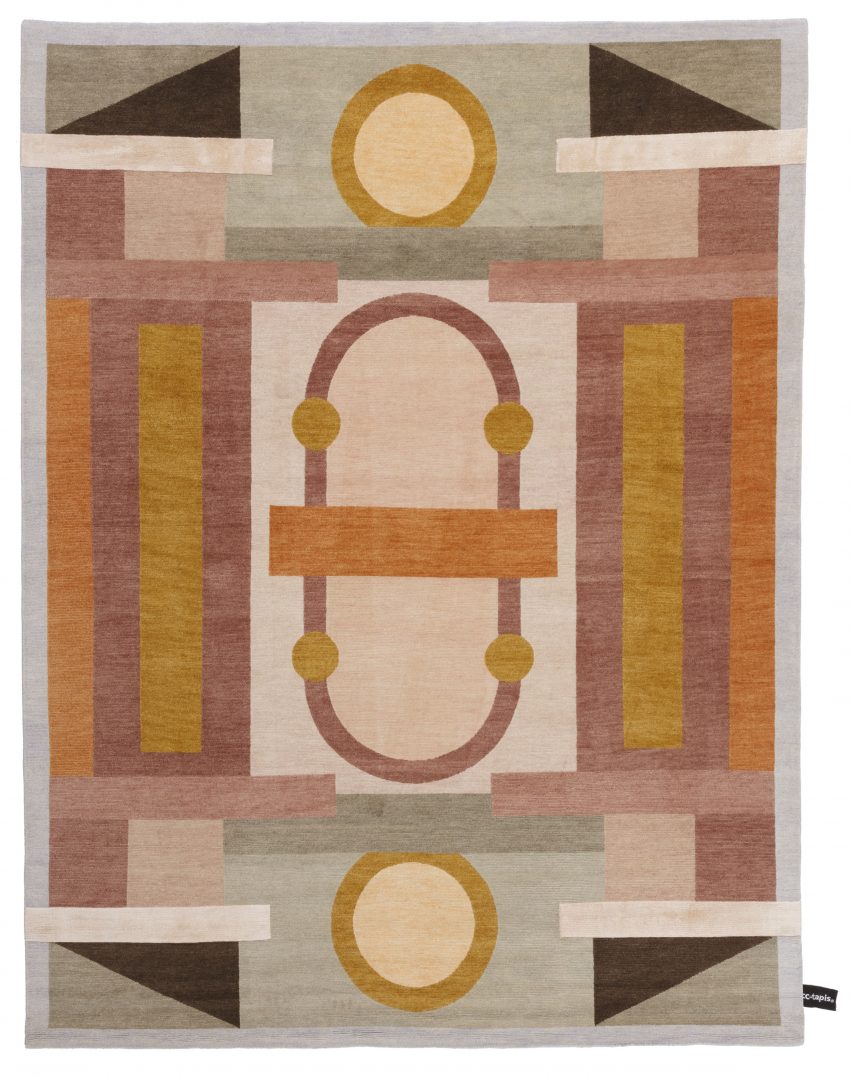
The designers reduced the paintings to their essential components of shape and colour, while retaining the illusion of perspective in each piece, and used this to create original designs comprised of colour-blocked, geometric forms.
"We literally started to disassemble different areas of the paintings, dividing the masterpieces into portions and highlighting the elements that made the perspective very clear and alive," explained the duo.
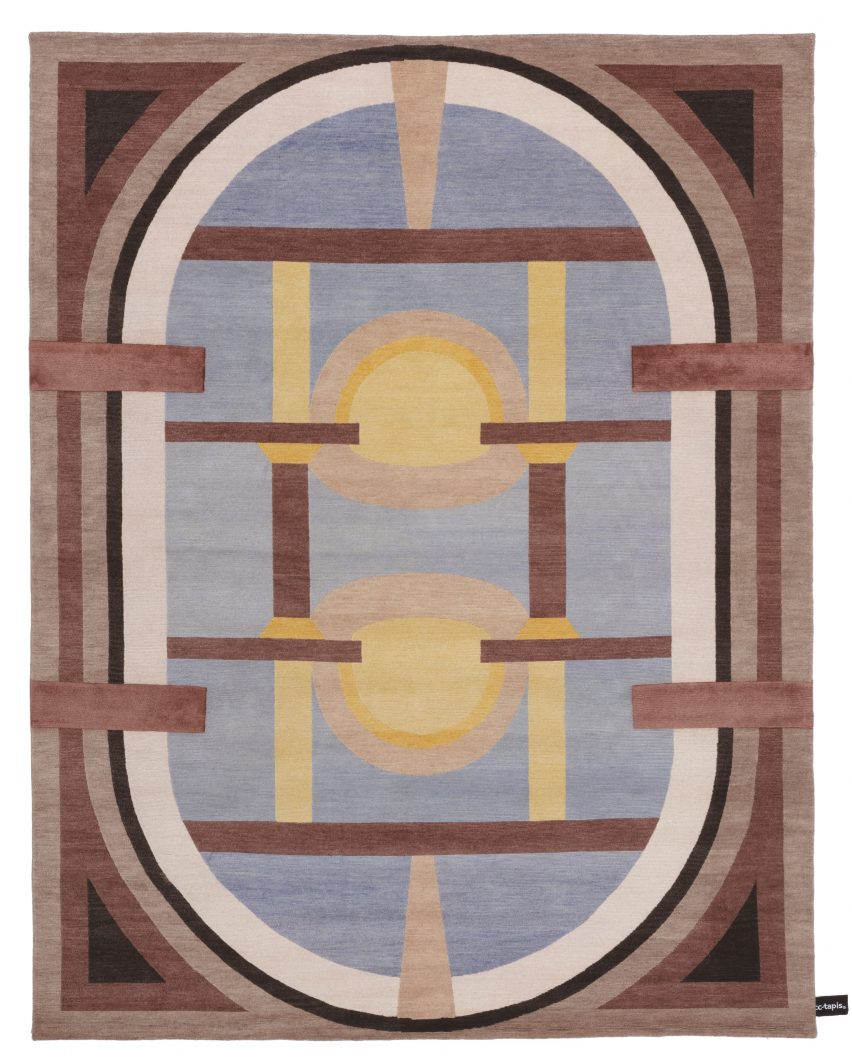
The Veneziano rug, for instance, was based on a work by early 15th century painter Domenico Veneziano, the Santa Lucia de' Magnoli altarpiece, which features olive, dusty pink and light blue hues.
An artwork by Sandro Botticelli, painter of the famous Birth of Venus, also informed one of the designs – specifically his Storie di Lucrezia painting, depicting a battle scene in shades of terracotta and brick red, framed by angular architecture.
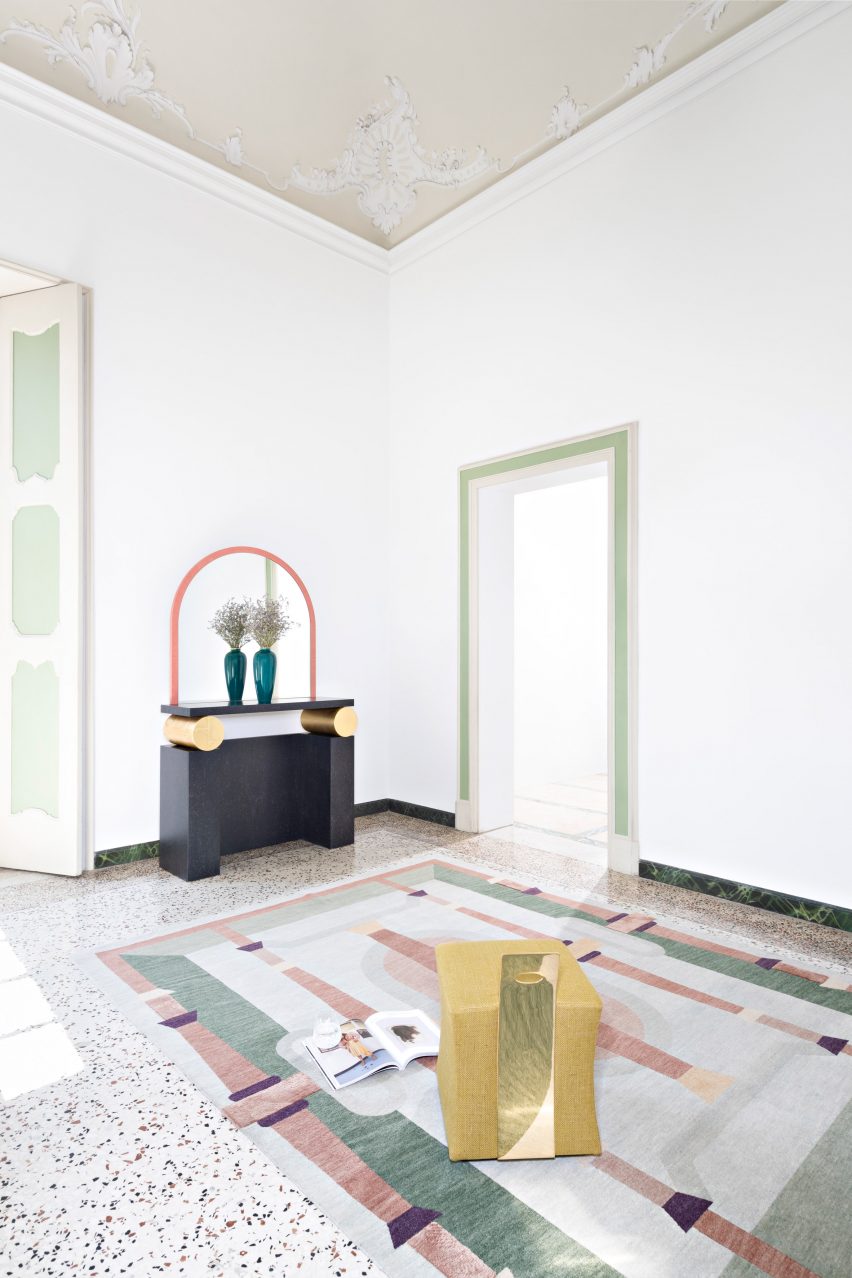
The other two rugs take their design cues from Ludovico Mazzolino's painting, Presentazione di Gesù al tempio, and Giovanni Bellini's artwork, Pala di San Zaccaria – both illustrating religious scenes in a variety of jewel-like tones.
The use of linear perspective in each of the paintings involved applying principles of mathematics and geometry to painting, to realistically portray space and depth in artworks.
"Renaissance artists always tried to create a new type of space with their rules and techniques of perspective, which was a new field between openness and intimate withdrawal, something completely new compared to their predecessors," said Maturo and Roscini.
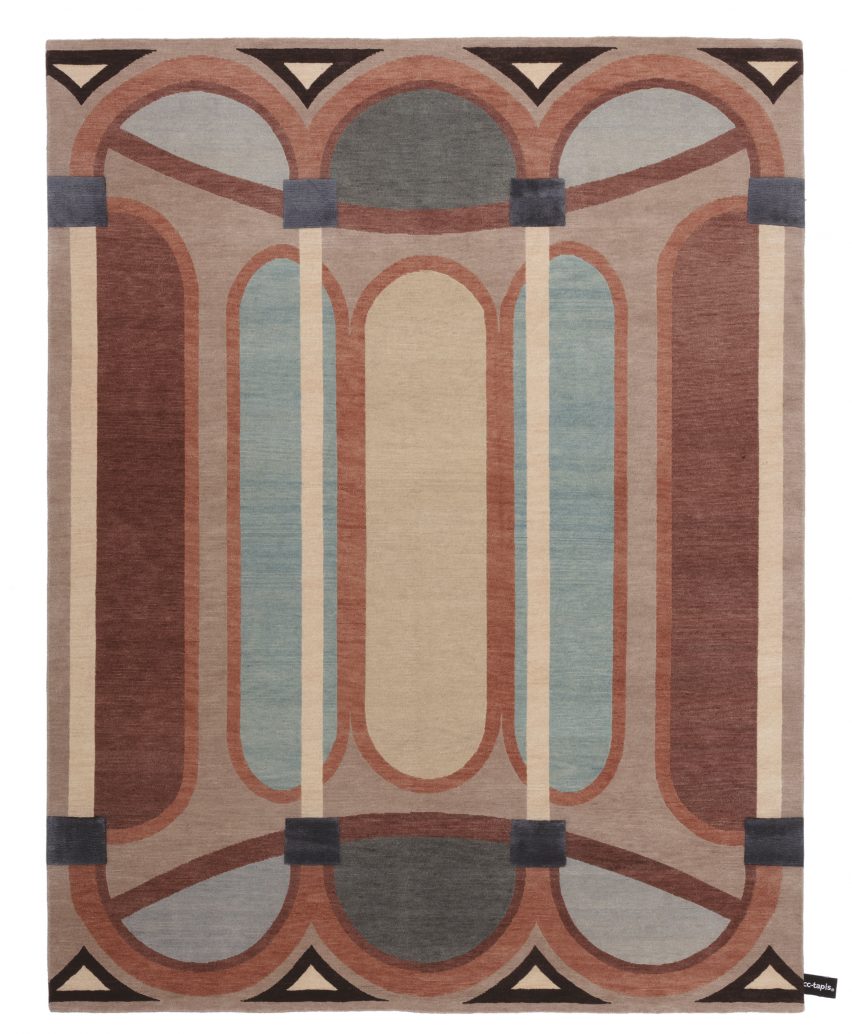
"We asked ourselves, why, after 500 years, these paintings made up of shapes, forms and colours still have an amazing power over us? How can they still work considering the nature of contemporary aesthetics?" they continued.
"It was clear enough that the use of perspective was at the centre of the Renaissance artists' research," they continued. "We wanted to bring these elements into contemporary design."
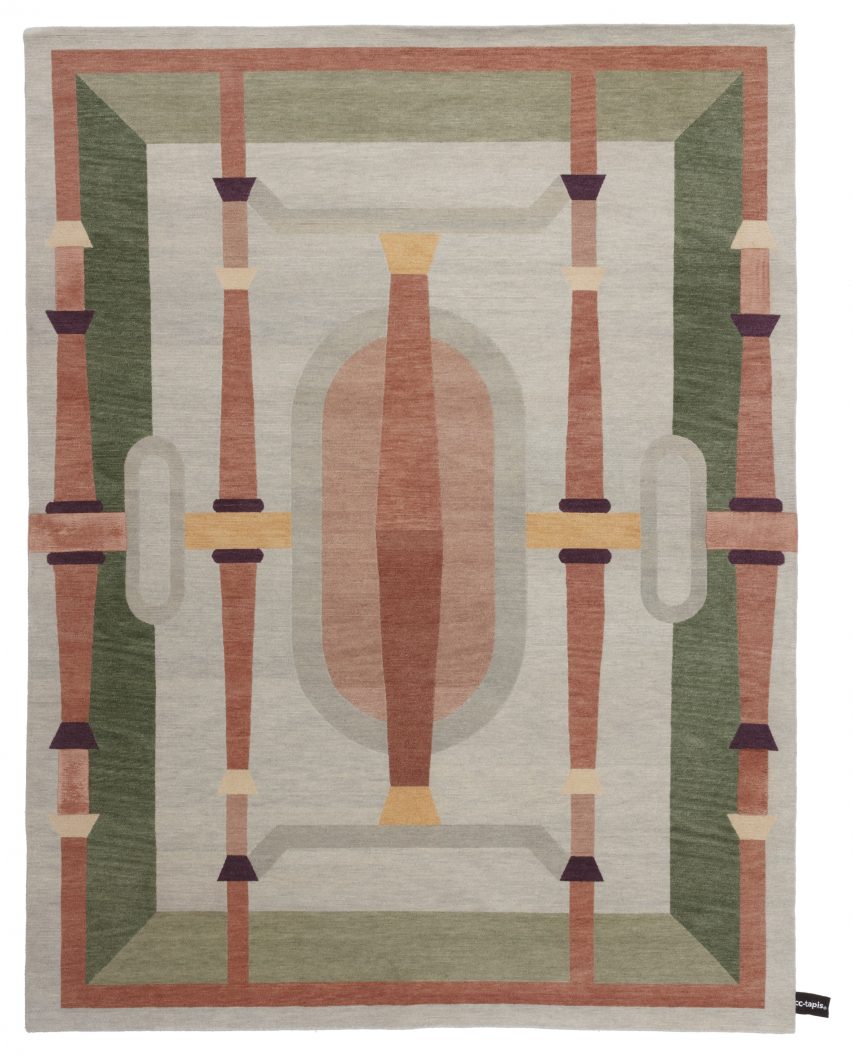
Spanish designer Patricia Urquiola also adopted an illusory effect with her Rotazioni and Visioni rug collection, which uses block colours and black outlines to create geometric patterns, in a bid to create a false sense of depth by tricking the eye.
Photography is by Beppe Brancato.